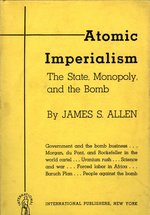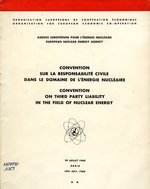The moment the Enola Gay's bomb bay doors opened over the skies of Hiroshima, atomic energy became one of the most controversial issues of the 20th century. The human race had entered a new age and gained a previously unknown understanding of power and violence.
As reports of the United States' new weapon travelled around the globe, atomic energy suddenly became a worldwide topic. Discussions of atomic weapons were held on an international level, both through official channels and the popular media, with dozens of nations and organizations voicing their opinions. Most of these petitioners were concerned with the question of access. Who had the right to produce nuclear devices for peaceful or military use? Who could manipulate atomic energy? How could they do it, where, and under what restrictions? And finally, who had the right to profit from these discoveries?
The earliest debates inside the United States focused on wresting control of atomic energy from the military.1 Proponents of the military monopoly cited national security and public safety as the dominant concerns against private, unclassified involvement in the atomic energy industry. In response, many scientists and private citizens feared that military commanders would be too hasty to use atomic weapons if left unchecked by non-military groups. Ultimately, the Atomic Energy Act of 1946 created the Atomic Energy Commission, a civilian-run organization, to research atomic energy and control its distribution.234
With the military monopoly broken, Monsanto and other corporations who had assisted in the Manhattan Project began to petition for their right to research applications of atomic energy.5 This proposition was, to many, at least as frightening as the military monopoly; the U.S. military was loyal to the American people but private industry was ostensibly responsible only to its shareholders.6
Notes
- 1490. Allen, James S. Atomic Energy and Society. An Appraisal of the Conflict Between Monopoly-Military Interests and the Social Use of Atomic Energy. New York: International Publishers, 1949. HD9698.A2 A6 1949. Return to text ↑
- 1563. Mullenbach, Philip. Civilian Nuclear Power. Economic Issues and Policy Formation. New York: Twentieth Century Fund, 1963. HD9698.A3 M8. Return to text ↑
- 1577. Orlans, Harold. Contracting for Atoms. A study of public policy issues posed by the Atomic Energy Commission's contracting for research, development, and managerial services. Washington, D.C.: Brookings Institution, 1967. HD9698.U5 O7. Return to text ↑
- 1524. Dahl, Robert A. & Ralph S. Brown. Domestic Control of Atomic Energy. New York: Social Science Research Council, 1951. HD9698.U52 D3 1951. Return to text ↑
- 1589. Stanford Research Institute. The Industrial Utilization of Fission Products (Gross, Mixed and Separated). A Prospectus for Management. Stanford: Stanford Research Institute, March 1951. QC782 .S8 1951. Return to text ↑
- 1576. Organisation for Economic Co-operation and Dvelopment. International Trade Union Seminar on Nuclear Energy Problems. Organised at Dusseldorf (Germany) 29 November - 2 December 1960. Final Report. No publisher: Division for Social Affairs, 1960. QC792.7 .O74 1961. Return to text ↑


